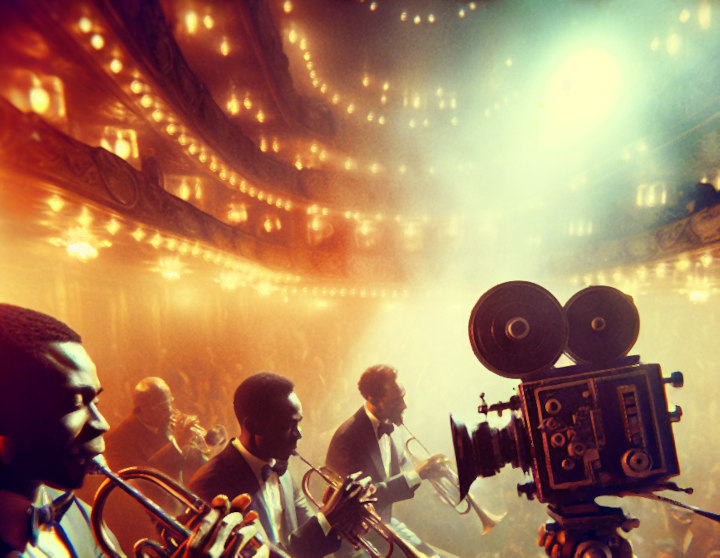Enchantment of Jazz

I think you either love it or hate – jazz – the enigma that has captivated audiences for decades, igniting fiery debates and stirring passions on both ends of the spectrum. What is it about this genre that evokes such strong emotions in people? To unravel this musical riddle, let’s embark upon a journey through time and delve into the essence of jazz.
Imagine jazz as a tapestry intricately woven with threads of various musical styles, or as a bunch of styles thrown together by master musicians. It’s like a culinary fusion where flavors from different cuisines blend harmoniously into one delectable dish. Just as a skilled chef combines ingredients to create an unforgettable gastronomic experience, jazz musicians skillfully weave together elements of blues, ragtime, and swing to produce a sonic masterpiece.
To comprehend the allure of jazz I think that we have to first acknowledge its rich historical context. Born in the early 20th century amidst African-American communities, jazz emerged as a form of artistic expression reflecting both joy and sorrow. It served as a powerful voice against societal injustice during times of segregation and racial discrimination.
Now picture yourself strolling through the bustling streets of New Orleans, where jazz took its first breaths. Teeming with lively rhythms and soulful melodies, this vibrant city birthed iconic figures like Louis Armstrong and Jelly Roll Morton – pioneers who propelled jazz onto global stages.
But why do some people love jazz while others dismiss it with disdain? It’s akin to appreciating modern art; some find beauty in abstract brushstrokes while others yearn for more realistic depictions. Similarly, jazz demands an open mind and an appreciation for improvisation – its heartbeat and lifeblood.
Yet caution must be exercised when delving into this captivating world. Like any complex endeavor, understanding jazz requires patience and persistence. Imagine trying to decipher intricate poetry without any prior exposure to language or literature! It is not enough to casually listen; one must explore books on jazz theory, explore the discography of legendary artists, and immerse oneself in the vast realm of jazz history.
For those who find themselves initially resistant to its charm, I urge you to consider alternative approaches. Start with accessible sub-genres like smooth jazz or contemporary jazz fusion. These styles retain elements of jazz while incorporating more familiar melodies and arrangements, acting as a stepping stone toward a deeper appreciation.
Allow me to share a personal anecdote – my own journey with jazz was initially met with skepticism. However, through persistence and an open mind, I discovered the magic hidden within this genre. From the soulful improvisations of Miles Davis to the sophisticated compositions of Duke Ellington; from the sultry vocals of Ella Fitzgerald to the experimental genius of John Coltrane – each artist unveils a unique facet of jazz’s kaleidoscopic beauty.
Whether one loves or hates jazz depends on their willingness to embrace its complexities and nuances. Like any form of art, it requires exploration and understanding. So let us cast aside preconceived notions and embark on this musical adventure together, for only then will we truly comprehend the allure and wonder that is jazz.



